Katelyn Behrman’s three-part series on the Walnut Street Theatre concludes. Katelyn interviews Walnut director Bernard Havard and leaders of the Philadelphia theater world about the Walnut’s place in the changing landscape of local theater. Read parts one and two.
From the 1930s to the early 1970s, the Walnut acted as the leading Broadway try-out house: Before moving to Broadway, shows would come to the Walnut to “try-out” for a week or two. A wealth of famous actors ranging from Marlon Brando to Sidney Poitier graced the Walnut’s stage.
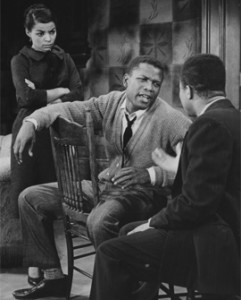
Jeffrey Lanes, now ninety-six years old, saw a variety of try-out shows at the Walnut in the 1950s and 1960s. In a breathy and slightly brittle voice, Lanes romantically recalls, “I used to go there a lot as a kid. And, in the late 50s, early 60s, I saw a lot of plays. It was very lively; it was sort of like New York City—a lot of nightclubs after the theater. Most of the people liked to go to the theater and then go out afterwards. And stay in fancy hotels,” he chuckles and rapidly begins listing the plays that he saw try out at the Walnut: So Called Your Own Thing, The Diary of Anne Frank, The Music Man, Gypsy,and West Side Story. “West Side Story was much longer than the one that played in New York City. Gypsy, too, was cut. It had about forty minutes of it cut when it got to New York City,” he laments. As a try-out house, the Walnut also premiered plays that didn’t make it in New York. “That doesn’t mean that they were bad,” snappily states Lanes. “I saw a number of shows that failed on Broadway, just because they failed financially—some of them were good.”
For Lanes, the excitement of seeing a new production outweighed the lack of local actors on the stage. However, when the Walnut began producing its own shows, it also began to hire local actors. Philadelphia was no longer a “hopping place,” as Lanes affectionately remembers but rather, as University of Pennsylvania theater professor Jim Schlatter describes, “kind of a scary place at night.”
Schlatter believes that once Philadelphia theaters began hiring locally in the early 1990s, the city became more appealing to theatergoers, as it created a “theater culture in which local actors, professional actors, could stay in Philadelphia and work all the time.” Philadelphia audiences soon began to love seeing local actors on stage, performing in wildly different roles in multiple theaters. No longer did theater fans feel that in order to see a great show, they had to take a ninety-minute train ride to New York. Rather, they could see a highly accomplished Philadelphia actor perform the same role just as well as a New York actor, if not better.
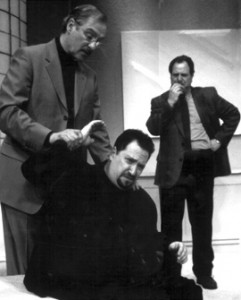
“That’s been a tremendously important thing for the community: that option for performers to stay in Philly. It’s given tremendous access for the audiences here in the city,” states Tom Quinn, director of education at the Walnut, adding that having a great theater culture helped to reinvigorate the city.
Quinn, who admits that he’s “biased”, traces the renaissance of the Philadelphia theater culture earlier than Schlatter, attributing the change to Havard entering the scene in 1982. He explains, “Thirty-one years ago, Philly was a very different theater town: there was no producing theater house in Philadelphia at all. Any shows which came through were touring shows,” which meant that most of the actors came directly from New York. However, when Havard transformed the theater into a producing house that hired local actors, subsequently starting the trend for other local theaters, like the Arden, to follow suite, actors felt as though they could make a living in Philadelphia.
Philadelphia theaters are “sustaining the income and livelihood of many Philadelphia actors and artists,” comments actor Apple-Hodge. “This means that more actors can afford to stay local, stay in the profession, and still pay their mortgage.” She adds that the Walnut especially serves a vital role in the artistic community, as it pays 30-70% higher than other Philadelphia theaters. “Just about every actor I know, at least the ones in Philadelphia, would choose the Walnut hands down, for plain ol’ economic reasons,” she adds, considering the possibility of an actor being offered two jobs at the same time.
Hiring actors from Philadelphia also establishes a sense of trust within the theater circuit, allowing actors to prepare emotionally intense roles within a very short time frame. “There’s something about the richness, even in directors working with actors, to be able to know and understand the way you work and talk: a shared vocabulary,” Schlatter smartly states, no doubt drawing on his professional acting experience. “You can get a whole lot more done without having to deal with the, you know, the difficult tensions that come with working with strangers. It can be a very rocky experience, if you don’t already have a good foundation of trust and respect. It makes the work better; it makes the audiences better.”
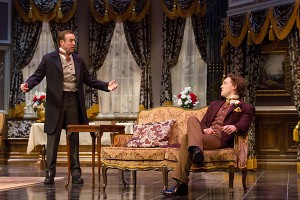
Quinn explains that the Walnut often hires the same actors: “It’s not quite like a repertory company, but there’s a lot of familiar faces that people will see, and that’s been a change for Philly as well,” he concludes.
In addition to providing local actors with an opportunity to perform, the Walnut also engages with the community through several outreach initiatives, ranging from summer camps for aspiring actors to performances specifically geared towards educational development. Quinn whips out several vibrant pamphlets and spreads them across the table. He smooths his hand over them, boasting, “There is not a regional theater in the country that does as much as we do when it comes to outreach.”
The education program headed by Quinn, who was offered his job shortly after Havard transformed the theater into a producing house, represents a vital part of the theater’s outreach program. The first program that the pair created, the theater school, trains around 1,200 students from the pre-professional actor to the curious kid. “That’s my favorite kind,” smiles Quinn, “the student that just loves theater and wants to have a fun experience.” Many of the Walnut Street Theater’s actors teach classes at the theater school, providing the actors with a way to engage with their audience offstage. Over the past twenty years, the theater school also has expanded to include a summer camp. “We have 120 kids come join us over the summer time, which is great. We take over the whole building in that time!” laughs Quinn, adding that the secret tunnels that course through the theater make for exhilarating games.
Spooky stories also characterize the theater and its summer program. A woman in Victorian-era clothing has been spotted several times by different people on the stage and in the audience. Quinn smiles, “I have not personally seen her. I have seen some of the large critters that can be in an old building like this!” Quinn lets out a loud laugh and then peers into a glass-lined case in the lobby and looks at a picture of a skull.
“This is the story I always tell all the kids,” he grins, gesturing towards the skull. “That is the skull of a guy name Pop Reed who was on the stage here for 50 years. And in his will, he put that when he died he wanted his skull to be used any time that Hamlet was staged here so that he could be Yorick. And several times after he passed away in the 19th century, his skull was in fact used as a prop.” The Walnut recently loaned the skull out to a museum, but even without the actual skull present, the story still holds an intoxicating effect on the theatergoer.
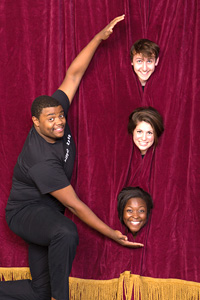
In addition to the theater school, the Walnut also has a touring outreach company, a group that brings professional theater to schools across the Delaware Valley, performing over 300 shows and reaching nearly 70,000 students annually. Quinn flips open a vivid red and blue pamphlet that has “When we play, learning happens!” boldly written across the top. “The touring outreach company is our way of creating the next generation of theatergoers, to show them what theater is like,” he explains, pointing to the different pictures in the program of children laughing, jumping, and goofing around. “And we also do shows that really tie into school curriculum that are about bullying, the environment, nutrition, diversity, and more.” This past season, the touring company also included a program about acceptance through the performance of Mita, the Magnificent.
Havard adds that the touring outreach company is multi-cultural in order to mirror the demographic of the schools. He elaborates, “Most of the schools that we are going into are largely African American and Hispanic, so our company is half Caucasian and usually half African American, Asian, or Hispanic, so that the students can identify with you and who we are and relate. A lot of the programming has to do with our relationships and resolving issues, especially racial issues,” he finishes.
Interestingly, when casting for performances at the Walnut, Havard sticks to the philosophy that the actor should look exactly like the character whom he or she is trying to portray. He explains, “If the part in a straight play calls for a mysterious gentlemen of an Italian origin or a Jewish origin, if a guy walks in looking like a WASP, hey! You came to the wrong audition. Don’t waste any more time.” But, for the school programs, Havard carefully selects his company so that although the group may not exactly reflect the script, they reflect their audience.
The Walnut also participates in the adopt-a-school program, a grant-based program that allows the Walnut to enter a school and lead the students in their own production, usually a musical. While at the school, the Walnut attempts to relate to the entire curriculum, whether it’s math or history, and really engage the students in learning. “We show the teachers where the theater can actually help in their teaching process,” explains Havard.
Currently, the Walnut has adopted two schools, one of in which thirty percent of its students come from homeless shelters. “Outreach to these kids is important,” Havard proclaims. “It helps raise hope, it helps raise academic attendance, and it helps parents to participate. We can literally point to the fact that we’ve reduced absenteeism among the students, and we’ve increased parent participation in these events, so we think we’re doing a great job in the community.” In the coming three years, the Walnut will adopt another school with the help of a huge grant from the William Penn Foundation. “They realized that this is an important program and we’re very pleased to receive their support,” beams Havard.
Most of the support for the outreach programs, however, comes not from grants but from subscription-sales revenue. Prominently displayed across from the stage entrance, a framed poster exhibits pictures taken during the Walnut’s outreach initiatives. “We use this to let our subscribers know what we do, because it’s the income from subscription that allows me to go out there and spend the money in the community like we do,” explains Quinn.
Although the subscription series enables the Walnut to generate a huge amount of income, there are disadvantages to having an audience composed almost entirely of subscribers. For example, Bernard Havard regrets that subscription is primarily a white American experience. “Unfortunately,” he softly says.

Havard does believe the Walnut’s audience, however, to be the most diverse in the city of Philadelphia, but he admits, “It’s a struggle with subscription to involve people of color. For instance, when we did In the Heights, which appeals to a Latino audience, we were able to find and to bring in a lot of Latinos, and our ticket sales were great. But, I don’t anticipate that many of the Latino single-ticket buyers will be converted into subscribers, because they’re not interested in our programming, which is not specific to their culture.” He adds that the same is true of an African-American audience: “They’re not particularly interested in Eurocentric culture. And I don’t blame them; it’s not part of their life experience.”
Quinn, however, believes that it’s necessary for the Walnut to continue reaching out to new audiences. “When we did In the Heights back in the fall, we had a very different demographic, and it was fantastic. So, we’ve got to find a way to encourage them to come back, and I think that’s the biggest challenge that we face.”
Schlatter not only sees subscription as limiting the racial diversity of the audience but also limiting the age diversity. “White hairs!” he laughs, describing the typical audience of the Walnut. He raises his hand and puts out one finger. “An older audience has a lot of disposable income and they’ve got time.” The idea of locking five shows into a younger person’s schedule often seems out of reach. For example, Quinn explains that he received a number of calls from younger people interested in purchasing a ticket for Elf. When Quinn suggested that the caller upgrade to a subscription for $15, the person typically declined. “That’s a younger person’s mentality,” Quinn concludes.
Maryland Theater Guide critic Elliot Lanes worries that the older audience base will present problems in the future for the Walnut. “I mean, I guess a problem is,” he ponders in a gruff voice, “how do you replace these subscribers when they start dying off? It’s very hard to rebuild. It’s tough.”
Schlatter, however, disagrees, saying, “You know, you get this impression that when they all die off, there’s not going to be a theater anymore; that’s totally wrong. It’s a new audience all the time.” For Schlatter, the theater audience is self-replenishing; people engaged in culture, like himself, look forward to retiring so that they can attend the theater.
However, even this cyclical renewal of subscribers limits the audience’s diversity. “It’s always going to be in some ways a specialized audience,” notes Dr. Schlatter. “More education, more culture…people that are very engaged, not necessarily politically, but who feel like the city is a great cultural resource. So, there is this relationship in feeling really engaged with the city and that engagement is helped by a level of education, a level of culture, a level of intellectual sophistication.”
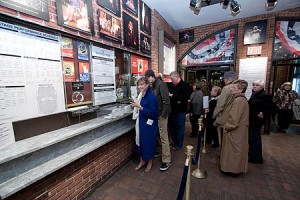
Quinn notes, however, that Havard consistently has been aware of the issues that this limited diversity may cause in the future. The Walnut has about an eighty-percent renewal rate for their subscriptions, which means that each year they have to find approximately 10,000 new subscribers. “That’s always a concern for us,” expresses Quinn. “So, we’ve got to make sure that we’re always reaching out to new audiences. And, we have to be smart about how subscriptions are changing.” He pauses, leaning his hand against his chin. “We may be in the case five, ten years from now, that we can’t be so reliant on subscriptions. It might be more individual shows…we’ve got to be able to change the way we work, change the way we pledge it, if we can’t plan for that kind of guaranteed income every year…we’ve been around a long time, but every place is really only one bad year away from being in a precarious place.”
The Walnut, though, is no stranger to challenges. Half of a tea-stained colored poster hangs on the wall of Havard’s office. In dark ink scribbled across the top are the words: “This performance was cancelled due to the death of A. Lincoln.” Havard takes a deep breath and slowly exhales, “What’s remarkable about that poster is that John Wilkes Booth, who assassinated Lincoln, it was his brother who owned this theater at that time.” Consequently, the theater was shut down for a brief period after the assassination. Quinn recalls, “There were riots in Philadelphia to ban any future theatrical performances: there was such anger at actors, in general. The Walnut itself was picketed; people were talking about burning the place down.”
Today, such anger against the theater does not exist. Yet, the influence of the theater seems to have dwindled from where it once stood. Christopher Munden sets down his coffee and states, matter of factly, “Theater is not in the same position culturally as it was before.”
Yet, there is more than a glimmer of hope for the continuing impact of theater. “In the 203 years that we’ve been around,” analyzes Quinn, “there’s been a constant thread of that [new experiences]: whether it were other theaters, whether it was television, whether it was film. I think there’s a reason why we’re able to still be around.”
There’s something about the feeling of seeing a performance, of the desire to dance in one’s seat when the actors begin singing “Summer Nights,” as they did in last summer’s production of Grease, and of seeing the actual veins pop out of an actor’s forehead when he plays an emotionally intense scene that you can’t quite get in any other form than the theater. “You’re face to face. The actor can stop and say hello to you,” remarks Quinn. “That’s a unique experience that I think is unique enough that, if we’re smart about it, is something we can preserve.”
“We can’t create the scenic effects that you can achieve with a film and especially with their budget,” admits Havard. “But, we’re selling a show, the experience. And if the audience comes to the theater, they’re bringing with them a very valuable commodity, which is imagination. You don’t necessarily need that at the movies—they fill it all in for you. Where at the theater, you fill it in. It’s like a coloring book, where you fill in the colors yourself. We provide the outline and you fill in the rest.”
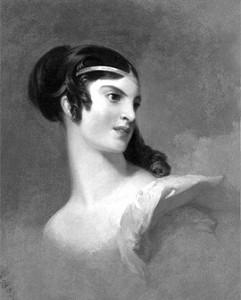
“You know, a lot of people do still come to the theater, and for good reason. It’s a great art form, and I’m a big believer in its transformative power to affect you as you sit in a dark room,” breathes Munden. “If just a few kids come to the Walnut with their grandparents and love a show, it will help sustain theater for future decades.”
And, perhaps what stands out the most about the Walnut is not only its power to transform the audience, but also the actors. “Many of the early “greats” of the American stage—from Charlotte Cushman and Edwin Forrest to Marlon Brando—performed here,” Krista Apple-Hodge says with awe. “Performing there is an incredible high, knowing you’re directly a part of an important piece and timeline of history.”
A small piece of stationery, torn at the edges, hangs among the other artifacts on Havard’s office wall. Written in elegant handwriting, the letter, composed by nineteenth-century actress Fanny Kemble, heartbreakingly describes her feelings towards her divorce. The last line of the letter reads, “For if they cannot remove the thorns from my path, they have certainly strewed them over with sweetness.” Fanny describes the kindness of her friends in sending her flowers; however, this last line could also describe what the Walnut wishes to accomplish with its productions. For although a play, or a flashy musical, cannot fix what may be broken in someone’s life, it can certainly coat the person’s troubles with sweetness for those two hours when the house lights darken and the stage awakens.
Read parts one and two of this three-part feature on the Walnut Street Theatre.
